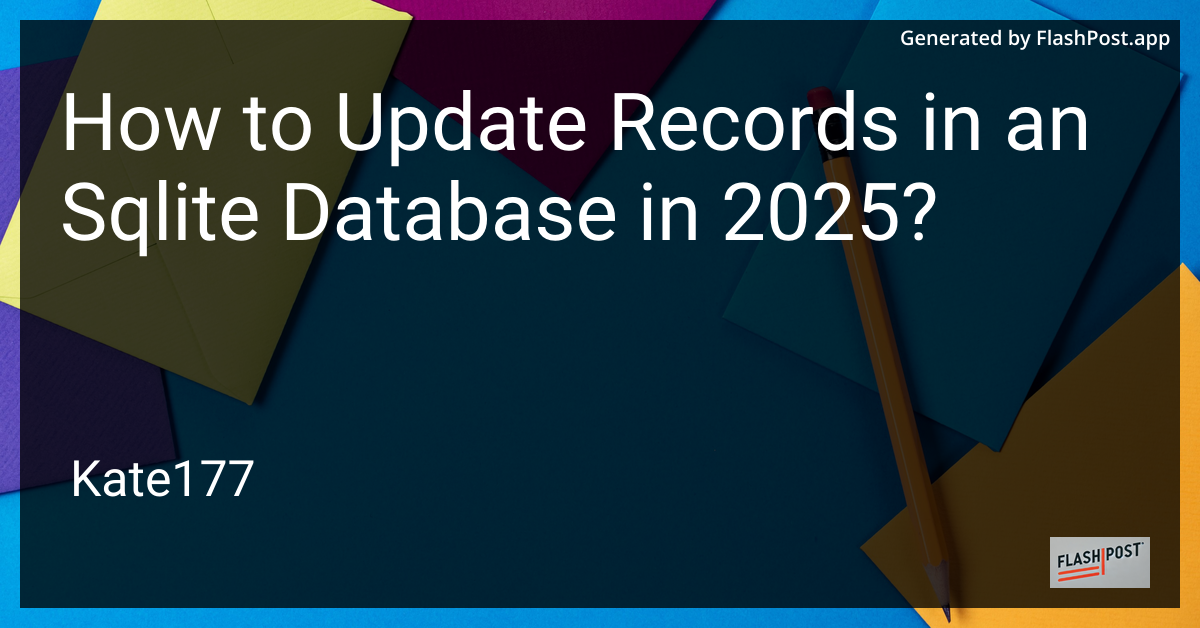
In 2025, SQLite remains a popular choice for lightweight, serverless database solutions thanks to its simplicity and efficiency. Whether you're working on a mobile app or a desktop application, knowing how to update records in an SQLite database is a crucial skill.
Introduction to SQLite
SQLite is a self-contained, high-reliability, embedded, full-featured, public-domain, SQL database engine. Unlike most SQL databases, SQLite does not have a separate server process. It reads and writes directly to ordinary disk files. A complete SQL database with multiple tables, indices, triggers, and views, is contained in a single disk file.
Prerequisites
Before you dive into the update operations, ensure you've set up SQLite in your environment. This guide assumes a basic understanding of SQL commands and structures.
Updating Records
Updating records in SQLite is done using the UPDATE SQL statement. Let's look at the steps involved:
Step 1: Connect to SQLite Database
First, establish a connection to your SQLite database. In many programming languages, this is done using SQLite libraries.
Step 2: Prepare the SQL UPDATE Statement
An UPDATE statement takes the following form:
UPDATE table_name SET column1 = value1, column2 = value2, ... WHERE condition;
table_name: The name of the table you're updating.column1 = value1: Specifies the column to be updated and the new value.WHERE condition: An optional filter to update specific records.
Step 3: Execute the Update
Once your SQL is prepared, execute it using your programming language's SQLite library.
Example in Python
Here's a simple example using Python:
import sqlite3 connection = sqlite3.connect('example.db') cursor = connection.cursor() sql_update_query = """UPDATE employees SET salary = salary + 500 WHERE department = 'IT'""" cursor.execute(sql_update_query) connection.commit() connection.close()
Getting Current Timestamp in SQLite
Updating records often involves setting a timestamp. For more information, see how to get a timestamp in SQLite.
Using SQLite with Other Technologies
SQLite's versatility allows it to be used in various environments, including with frameworks like Symfony. Learn more about using SQLite with Symfony.
Syncing Data Between Databases
For projects that require syncing between PostgreSQL and SQLite, you should explore how to sync data between these databases.
Conclusion
Updating records in an SQLite database is a straightforward process that won't change much over time. In 2025, it remains efficient and effective for applications of all sizes. By understanding the SQL syntax and leveraging the capabilities of SQLite, you can perform updates reliably and maintain the integrity of your data.
Remember to back up your database before performing bulk updates, and test your SQL commands in a safe environment to prevent accidental data loss.